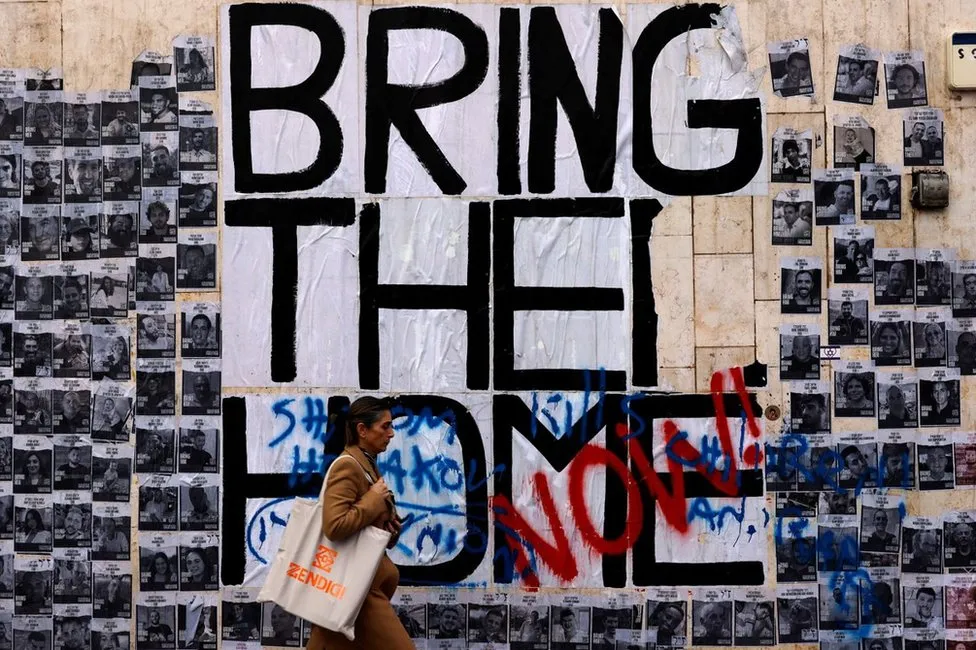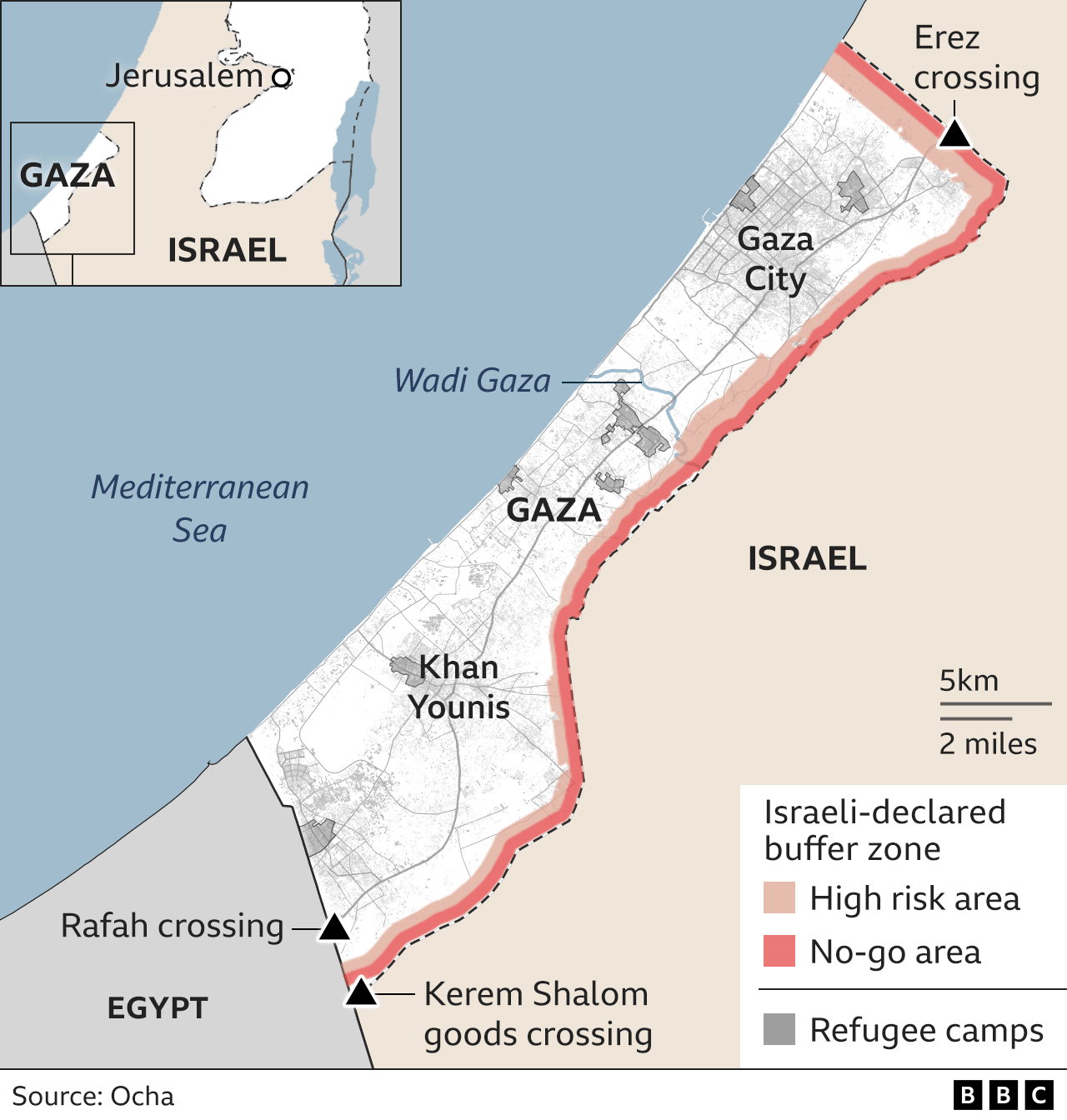Today the BBC reported on the discussion of ongoing mediation efforts to negotiate a ceasefire and hostage release deal between Israel and Hamas. Facilitated by Qatar, Egypt, and the US, these indirect talks aim to alleviate the suffering of Palestinian civilians in Gaza and secure the release of Israeli hostages held by Hamas. Despite “serious” progress in discussions, significant differences remain on fundamental issues. The article mentions a proposed five-stage framework by Cairo, starting with a humanitarian truce and leading to a long-term ceasefire, with the gradual release of hostages and prisoners being key components.
Cairo’s Ceasefire Plan
The five-step plan proposed by Cairo for a ceasefire and hostage release between Israel and Hamas includes:
- a humanitarian truce where Hamas releases civilian hostages;
- in exchange, Palestinians would be freed from Israeli jails, and aid to Gaza would increase;
- a long-term ceasefire and complete cessation of hostilities;
- further release of Palestinian inmates in tandem with the handover of Israeli hostages; and
- the release of high-profile Palestinian prisoners for captive Israeli soldiers. This plan aims to gradually de-escalate the conflict.

Levels of Analysis
Applying Kenneth Waltz’s Levels of Analysis to the Israel-Hamas situation, we can elaborate as follows:
- Individual Level: Key figures include Israeli Prime Minister Benjamin Netanyahu, known for his firm stance against Hamas, and the leadership of Hamas, whose decisions directly influence the conflict. The roles of mediators from Egypt and Qatar are also pivotal.
- National Level: Israel’s national security policies and Hamas’s governance in Gaza directly impact their conflict strategies. Internal political dynamics within both Israel and the Hamas leadership influence their approach to negotiations and conflict resolution.
- Regional Level: Regional actors like Egypt and Qatar, who are facilitating the negotiations, have their interests and influence in the region. The involvement of these countries reflects the complex interplay of regional politics in the Middle East.
- International Level: The involvement of the U.S. and other international entities indicates the global significance of the conflict. International diplomatic efforts, UN interventions, and global public opinion shape the broader context within which this conflict and its resolution are viewed.

Potential Outcomes
From a Neorealist perspective, considering the power dynamics and state interests in the Israel-Hamas conflict, the potential outcomes could be:
- Improbable Outcome: A comprehensive, long-lasting peace agreement. Given the deep-rooted hostilities, cultural differences, and strategic interests, a complete resolution is unlikely in the near future.
- Probable Outcome: Temporary ceasefire agreements. Based on historical patterns, short-term truces are more likely, although they may not address underlying issues.
- Highly Probable Outcome: Ongoing conflict with intermittent negotiations. Given the enduring national interests and regional power dynamics, continued conflict with sporadic talks is the most likely scenario. This outcome is already in play since the actors have yet to accept the ceasefire- Israel has rejected it but responded with alternative terms.
References:
- Knell, Y. (2023). Mediators push for Gaza ceasefire deal but gaps remain between Israel and Hamas. BBC News. Retrieved from BBC
- Waltz, K. N. (1979). Theory of International Politics. Addison-Wesley.
- Mearsheimer, J. J. (2001). The Tragedy of Great Power Politics. W. W. Norton & Company.
- ChatGPT. (n.d.). OpenAI. https://chat.openai.com/#
- Staff, N. A. (s. f.). Israel rejects Hamas Gaza war truce, lays out own terms. The New Arab. https://www.newarab.com/news/israel-rejects-hamas-gaza-war-truce-lays-out-own-terms









No responses yet